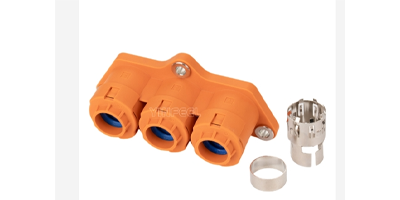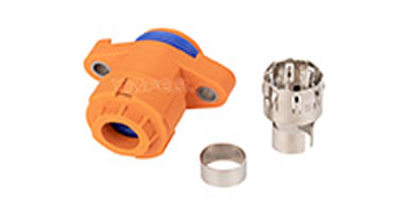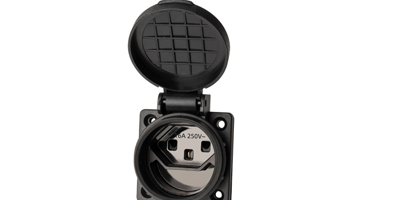In the vast field of electronic connection technologies, both Through Hole Connectors and Surface Mount Technology (SMT) play extremely crucial roles. Each of them has unique characteristics, which determine their applicability in different electronic application scenarios. Deeply exploring the advantages and disadvantages of the two helps electronic engineers and related practitioners make more informed technological choices during the design and manufacturing process, thereby optimizing various indicators such as the performance, cost, reliability, and maintainability of electronic devices.
Advantages of Through Hole Connectors
1.High Mechanical Stability: The pins of through hole connectors are inserted into the through holes of the circuit board and then soldered. This connection method provides strong mechanical fixation. When subjected to external forces such as vibration and shock, the connectors are less likely to fall off the circuit board, ensuring a more stable and reliable connection. It is suitable for applications with high requirements for connection stability, such as industrial control equipment and automotive electronics.
2.Simple Soldering Process: Generally speaking, the soldering technology of through hole connectors has a relatively low threshold. It does not require highly skilled operators, and the probability of defects such as cold soldering and short circuits during the soldering process is relatively small. Ordinary soldering tools such as soldering irons can be used to complete the soldering operation easily, facilitating manual soldering and large-scale production.
3.Easy Repair and Replacement: If a through hole connector fails or needs to be replaced, it can be removed from the circuit board by melting the solder joints with tools such as a soldering iron. Then, a new connector can be inserted and resoldered. The operation is relatively simple, the repair cost is low, which helps improve the maintainability and service life of the equipment.
4.High Current Carrying Capacity: The pins of through hole connectors are usually thick and can carry large currents. Therefore, in some circuits that require large current transmission, such as power circuits and power amplifiers, through hole connectors are a better choice. They can effectively reduce the resistance of the connectors, reducing energy loss and heat generation.
Disadvantages of Through Hole Connectors
1.Large Space Occupation: Since the pins of the connectors need to pass through the through holes of the circuit board, relatively large space on the circuit board needs to be reserved to accommodate the pins and through holes. This is not conducive to the miniaturization and high-density wiring of the circuit board. For some small electronic devices with strict space requirements, such as smart phones and tablet computers, the use of through hole connectors will be limited.
2.Low Production Efficiency: During the production process, inserting the pins of through hole connectors into the through holes of the circuit board requires a certain amount of time and manpower. Moreover, soldering operations are also required after insertion. Compared with surface mount technology, its production efficiency is relatively low and it is difficult to meet the needs of large-scale and high-efficiency production.
3.Poor High-Frequency Performance: The pins of through hole connectors are long, which will introduce large inductance and capacitance during high-frequency signal transmission, resulting in signal distortion, attenuation and delay. This affects the transmission quality of the signal and the performance of the system. Therefore, in high-frequency circuits such as radio frequency communication and high-speed digital signal processing, the application of through hole connectors is limited.
Advantages of Surface Mount Technology (SMT)
1.Miniaturization and High Density: Surface mount components are directly mounted on the surface of the circuit board without the need for drilling and inserting pins. This saves a large amount of space on the circuit board, enabling the circuit board to be made smaller and thinner and achieving higher assembly density. It meets the requirements of modern electronic devices for miniaturization, lightweight and high performance and is widely used in consumer electronics, communication equipment, computers and other fields.
2.Good High-Frequency Performance: Surface mount components have short pins or no pins, which can reduce the influence of inductance and capacitance during high-frequency signal transmission, reduce signal reflection and attenuation, and improve the transmission speed and quality of the signal. They have good high-frequency characteristics and are suitable for high-speed digital circuits, radio frequency circuits and other applications with high requirements for high-frequency performance.
3.High Production Efficiency: Surface mount technology uses automated equipment for production, such as pick-and-place machines and reflow soldering ovens. It can achieve fast and accurate component mounting and soldering, greatly improving production efficiency and reducing production costs. It is suitable for large-scale and batch production and can meet the needs of modern electronic manufacturing for high-efficiency production.
4.Cost Reduction: On the one hand, surface mount components are small in size and light in weight, so their cost is relatively low. On the other hand, the automation degree of surface mount technology is high and the production efficiency is high, reducing labor costs and material waste, thus reducing the overall production cost. In addition, the smaller circuit board size also helps reduce the material cost and manufacturing cost of the circuit board.
Disadvantages of Surface Mount Technology (SMT)
5.Large Equipment Investment: The equipment required for surface mount technology, such as pick-and-place machines, reflow soldering ovens and solder paste printers, is expensive. Moreover, the maintenance and upkeep costs of the equipment are also high. For some small enterprises or research and development units, the investment threshold is high, increasing production costs and capital pressure.
6.Difficult Solder Quality Inspection: Since surface mount components are small in size and the solder joint spacing is narrow, it is difficult to inspect the quality of solder joints after soldering. Traditional inspection methods are difficult to meet the requirements. Professional inspection equipment such as automatic optical inspection (AOI) equipment and X-ray inspection equipment needs to be used. These equipment are expensive and the inspection speed is slow, increasing the inspection cost and time cost in the production process.
7.Difficult Repair: Surface mount components are directly soldered on the surface of the circuit board. Once a component fails, special tools and techniques such as hot air guns are required to melt the solder joints to remove the component. The operation is difficult and it is easy to damage surrounding components and the circuit board. The repair cost is high and the technical level requirements for repair personnel are also high.
8.Limited Component Selection: Not all electronic components have surface mount forms. Some special components or high-power components may still only have through hole packaging forms available. This limits the application of surface mount technology in some specific fields. When designing a circuit, the appropriate connection technology needs to be selected according to the availability of components.







